

Zitierweise / cite as:
Payer, Alois <1944 - >: Chronik Thailands = กาลานุกรมสยามประเทศไทย. -- Chronik 1865 (Rama IV.). -- Fassung vom 2017-01-25. -- URL: http://www.payer.de/thailandchronik/chronik1865.htm
Erstmals publiziert: 2013-07-11
Überarbeitungen: 2017-01-25 [Nachträge] ; 2017-01-11 [Nachträge] ; 2016-11-28 [Nachträge] ; 2016-05-18 [Nachträge] ; 2016-04-13 [Nachträge] ; 2015-08-22 [Nachträge] ; 2015-06-05 [Nachträge] ; 2015-05-07 [Nachträge] ; 2015-04-22 [Nachträge] ; 2015-04-02 [Nachträge] ; 2015-03-07 [Nachträge] ; 2014-12-18 [Nachträge] ; 2014-08-17 [Nachträge] ; 2014-03-05 [Nachträge] ; 2014-02-22 [Nachträge] ; 2013-11-24 [Nachträge] ; 2013-11-12 [Nachträge] ; 2013-10-15 [Nachträge] ; 2013-09-28 [Nachträge]
©opyright: Dieser Text steht der Allgemeinheit zur Verfügung. Eine Verwertung in Publikationen, die über übliche Zitate hinausgeht, bedarf der ausdrücklichen Genehmigung des Herausgebers.
Dieser Text ist Teil der Abteilung
Thailand von
Tüpfli's Global Village Library
ช้างตายทั้งตัวเอาใบบัวปิดไม่มิด
|
Gewidmet meiner lieben Frau Margarete Payer die seit unserem ersten Besuch in Thailand 1974 mit mir die Liebe zu den und die Sorge um die Bewohner Thailands teilt. |
|
Bei thailändischen Statistiken muss man mit allen Fehlerquellen rechnen, die in folgendem Werk beschrieben sind:
Die Statistikdiagramme geben also meistens eher qualitative als korrekte quantitative Beziehungen wieder.
|
1865 - 1890
Ho-Kriege ( สงครามปราบฮ่อ). Besonders betroffen ist der Vasall Siams, das Königreich Luang Prabang (ພຣະຣາຊອານາຈັກຫລວງພະບາງ) mit seinen Vasallenstaaten
- Sipsong Pan Na (สิบสองปันนา / 西雙版納傣族自治州 )
- Sipsong Ch(a)u Thai (สิบสองเจ้าไต / สิบสองจุไทย / ສິບສອງຈຸໄຕ / ສິບສອງເຈົ້າໄຕ)
- Hua Phan Thang Ha Thang Hok (หัวพันทั้งห้าทั้งหก)
Abb.: Lage von Sipsong Pan Na (สิบสองปันนา / 西雙版納傣族自治州 )
[Bildquelle: Croquant / Wikimedia. -- Creative Commons Lizenz (Namensnennung)]
Abb.: Lage der Sipsong Ch(a)u Thai (สิบสองเจ้าไต / สิบสองจุไทย / ສິບສອງຈຸໄຕ / ສິບສອງເຈົ້າໄຕ)
[Bildquelle: Kinodo2 / Wikimedia. -- GNU FDLicense]
Abb.: Ungefähre Lage der Staaten Luang Prabang (ພຣະຣາຊອານາຈັກຫລວງພະບາງ) und Hua Phan Thang Ha Thang Hok (หัวพันทั้งห้าทั้งหก)
[Bildquelle: UNOSAT / Wikipedia. -- Public domain]
Die Ho-Kriege (Thai: สงครามปราบฮ่อ, Songkhram Prab Ho, wörtlich Krieg zur Unterdrückung der Ho) wurden von südchinesischen paramilitärischen Banden ausgelöst, die zwischen 1865 und 1890 in Tonkin, Nordlaos und Nordthailand eindrangen und dort erfolgreich bekämpft wurden. Invasion der Flaggenbanden der Ho
Mitte der zweiten Hälfte des 19. Jahrhunderts drangen chinesische Marodeure der Ho, die so genannten Flaggenbanden, aus dem Süden von Yunnan ( 雲南) im nördlichen Laos ein und verwüsteten weite Gebiete. Sie waren Gesetzlose und Ausgestoßene und flohen infolge der Unterdrückung des Taiping-Aufstands (1851 - 1864) im südlichen China. Sie drangen 1865 als "Schwarze Flaggen" (黑旗軍) und rivalisierende "Gelbe Flaggen" zunächst in Tonkin im heutigen Nordvietnam ein, wo sie Basislager am Oberlauf des Roten Flusses (紅河) errichteten.
Gegenwehr der Vietnamesen und der Qing (清朝 / ᡩᠠᡳᠴᡳᠩ ᡤᡠᡵᡠᠨ)Schwarze und Gelbe Flaggen
Die Schwarzen Flaggen konnten unter ihrem Anführer Liu Yung-fu (劉永福, 1837 - 1917) eine gewisse Eigenständigkeit in Annam erreichen, dessen König Tự Đức (嗣德, 1829 - 1883) sie als Gegengewicht zum französischen Einfluss in Indochina einsetzte. Die Gelben Flaggen konnten sich allerdings nicht als halbwegs legale Macht etablieren und wurden durch eine gemeinsame Operation der Schwarzen Flaggen, der Annamiten und der Qing-Kräfte vertrieben. Nach dem Ende ihres Anführers, Huang Chung-ying, der gefangen und exekutiert wurde, flohen die Gelben Flaggen nach Westen und bedrohten die Gebiete der Tai-Völker um Sipsong Chau Thai (สิบสองเจ้าไต / สิบสองจุไทย) im heutigen Nordvietnam und Nordost-Laos.
Rote und Gestreifte Flaggen
Abb.: Lage von Sipsong Chau Thai (สิบสองเจ้าไต / สิบสองจุไทย)
[Bildquelle: Kinodo2 / Wikimedia. -- GNU FDLicense]Weiter im Westen drangen um 1872 weitere von den Qing-Truppen geschlagene Banden der Ho nach Laos ein, das damals ein Vasallenstaat von Siam war. Diese neuen Banden wurden Rote und Gestreifte Flaggen genannt, um sie von den älteren zu unterscheiden. Auf ihrem Zug in den Süden nahmen sie fast ganz Luang Phrabang (ຫຼວງພະບາງ) ein. 1873 plünderten die Roten Flaggen sogar Dien Bien Phu, während die Gestreiften Flaggen die laotische Ebene der Tonkrüge (ທົ່ງໄຫຫິນ) kontrollierten.
1874 organisierten König Oung Kham (เจ้าอุ่นคำ, 1811/16 - 1895) von Luang Phrabang und Monarch Tự Đức von Vietnam eine konzertierte Aktion, bei der Streitkräfte beider Reiche die Eindringlinge vertreiben sollten. Sie wurden von den Ho geschlagen und dabei der Prinz von Phuan (เมืองพวน), Ung, getötet. Die siegreichen Ho drangen weiter in den Süden und nahmen Vientiane (ວຽງຈັນ) ein, woraufhin Oun Kham den siamesischen König Chulalongkorn (Rama V.) um Hilfe ersuchte.
Die Ho und die Reaktion SiamsBeginn der Auseinandersetzungen
Im Frühjahr 1875 überquerten siamesische Truppen bei Nong Khai (หนองคาย) den Mekong (แม่น้ำโขง / ແມ່ນ້ຳຂອງ) und versuchten, das Hauptquartier der Ho bei Chiang Kham (เชียงคำ) zu erobern. Die Ho zogen sich daraufhin in die Berge bei Phuan (พวน) und Huaphan (ຫົວພັນ) zurück, so dass die Siamesen später im Jahr Laos wieder verließen und die bewaffneten Ho wieder auftauchten und nach Belieben plündern konnten.
Zweite siamesische OperationChao Oun Kham musste 1883 erneut die Siamesen zu Hilfe rufen, nachdem die Ho-Banden erneut Luang Phrabang bedrohten. König Chulalongkorn entsandte eine siamesische Armee, der überwiegend Soldaten aus dem Isan (อีสาน) und aus Nord-Thailand angehörten. Der britische Landvermesser James McCarthy nahm an der Expedition teil und nannte sie "unausgereift, schlecht vorbereitet und am Ende erfolglos"[1]. Er notierte: "Als wir nach Laos eindrangen, erhielten wir Nachricht von den Ho, quälende Berichte ihrer Verwüstungen der Dörfer, deren Einwohner sie abschlachteten, verstümmelten oder in die Gefangenschaft davonschleppten". Und weiter berichtet er als Augenzeuge, dass die Tempel geschändet und bewusst zerstört würden und Berge von Palmblattbüchern unter freiem Himmel lägen, die bald für immer verloren wären, wenn nicht jemand sich ihrer annehmen würde.
Schließlich reiste McCarthy nach Luang Phrabang, um mit den Kommandeuren zu beratschlagen. Die Ho waren nach Mueang You gegangen, das eigentlich vom Prinzen von Sukhothai (สุโขทัย) hätte verteidigt sein sollen. Dieser lag jedoch wegen der Malaria darnieder und hatte sich mit seinen Truppen nach Luang Phrabang zurückgezogen. Somit lag die Garnison offen für die Ho, die den Außenposten einnahmen und seine Umzäunung niederbrannten. Nach Einsetzen der Regenzeit im Juni wurde die Bedrohung durch die Malaria größer als die der Ho. Deshalb zogen sich die siamesischen Truppen nach Luang Phrabang und über den Mekong nach Nong Khai zurück.
Schlacht vom Februar 1885Anfang 1885 begannen die Kämpfe in Laos erneut, doch konnten während der dreimonatigen Auseinandersetzungen keine Erfolge erzielt werden. Die Ho-Banden waren mit modernen Repetiergewehren bewaffnet und in der Guerilla-Taktik ausgebildet. Sie versuchten ihre Feinde zu demoralisieren, indem sie Gefangene verstümmelten, versteckte Fallen mit angespitzten Pfählen einrichteten und nächtliche Überfälle durchführten.
Die siamesischen Truppen rückten dennoch am Morgen des 22. Februar 1885 gegen das Fort der Ho vor, das 400 m mal 200 m maß, von einem Zaun aus Bambus umgeben und durch sieben etwa zwölf m hohe Aufbauten gesichert wurde. Die laotischen und siamesischen Truppen gingen in Gruppen zu je 50 Mann vor und sicherten sich durch eine mobile Palisade. Die Angreifer hatten sechspfündige Berggeschütze zu ihrer Verfügung (Howitzer), doch für diese war nicht genügend Munition vorhanden. Als um 2 Uhr der siamesische Kommandant schwer verwundet wurde, brach man den Angriff ab.
Ende der HoDie Ho waren möglicherweise vom Gouverneur von Yunnan in den Süden gesandt worden, um die Franzosen zu provozieren. Dies mag für die Schwarzen Flaggen in Tonkin gelten, doch hatten die Ho offenbar andere Ziele. Die Ho setzten ihre Unternehmen bis in die Mitte der Neunziger Jahre des 19. Jahrhunderts fort, ehe die vereinte Macht der Siamesen und der französischen Kolonialtruppen sie vertrieb.
WirkungDie Ho-Kriege sind heute weitgehend vergessen. Vor dem Stadthaus von Nong Khai steht ein Denkmal zu Ehren der siamesischen und laotischen Soldaten, die während der Ho-Kriege getötet worden sind. Vor dem Hauptquartier der Polizei steht ein moderneres Monument für die Toten. Nahe dem Wat Angkhan (สวนโศกเศร้าอังคาร) am Ufer des Mekong ist ein kleinerer "Garten der Sorgen" (สวนโศกเศร้า), wo Witwen der Soldaten ihre Trauer ausdrücken konnten."
[Quelle: http://de.wikipedia.org/wiki/Ho-Kriege. -- Zugriff am 2014-12-10]
1865
Gründung von Mueang Mahasarakham (เมืองมหาสารคาม)
Abb.: Lage von Mueang Mahasarakham (เมืองมหาสารคาม)
[Bildquelle: OpenStreetMap. -- Creative Commons Lizenz (Namensnennung, share alike)]
"In 1865 the government allowed the powerful governor of Roi-et [ร้อยเอ็ด] to found a satellite town called Mahasarakham [มหาสารคาม]. Roi-et sent nine thousand people to populate the new town, and the governor sent his cousin to be its first governor. In 1868, the government declared, however, that Mahasarakham had become a province under the supervision of Bangkok and that its relationship with Roi-et had ended.
The government adroitly took advantage of the fact that, after three years, Mahasarakham no longer wished to be a satellite town and was strong enough to resist pressure from Roi-et.
It profited from the situation in three ways.
Firstly, by appearing as the champion of independence, it won the heartfelt loyalty of Mahasarakham.
Secondly, it gained more revenue, for as a province in its own right, Mahasarakham had to send the annual tribute (ngoen suai [เงินส่วย]) to Bangkok; this would have been popular with the people of the province, because the ngoen suai would have been lighter than the tributes they had had to send to Roi-et.
Thirdly, it weakened Roi-et, which had been deprived of its resources in man-power and in revenue."
[Quelle: Tej Bunnag [เตช บุนนาค] <1943 - >: The provincial administration of Siam from 1892 to 1915 : a study off the creation, the growth, the achievements, and the implications for modern Siam, of the ministry of the interior under prince Damrong Rachanuphap. -- Diss. Oxford : St. Anthonys College, Michaelmas Term 1968. -- 429 S., Schreibmaschinenschrift. -- S. 52. -- Faire use]
1865


Die US-Missionarsgattin Jane Hays McFarland eröffnet in Petchaburi (เพชรบุรี) eine Handarbeitsschule für Mädchen.
Abb.: Lage von Petchaburi (เพชรบุรี)
[Bildquelle: OpenStreetMap. -- Creative Commons Lizenz (Namensnennung, share alike)]
1865 - 1867
US-Baptistenmissionar Dan Beach Bradley (1804 - 1873) veröffentlicht im Druck:
เจ้าพระยาพระคลัง (หน) [Chaophraya Phraklang (Hon)] < - 1805> [Übers.] : สามก๊ก [Drei Königreiche]. -- (in der modernen Druckausgabe: 1500 Seiten im Lexikonformat). -- Originaltitel: 三國演義
Es wird ein großer Verkaufserfolg, weswegen Bradley in der Folgezeit viele weitere chinesische Liebesromane in Übersetzung veröffentlicht
1865/66

Der schottische Forschungsreisende und Berufsfotograf John Thomson (1837 - 1921) macht zahlreiche Aufnahmen in Bangkok, Ayutthaya und Phetchaburi.
"John Thomson (14 June 1837 – 29 September 1921) was a pioneering Scottish photographer, geographer and traveller. He was one of the first photographers to travel to the Far East, documenting the people, landscapes and artifacts of eastern cultures. Upon returning home, his work among the street people of London cemented his reputation, and is regarded as a classic instance of social documentary which laid the foundations for photojournalism. He went on to become a portrait photographer of High Society in Mayfair, gaining the Royal Warrant in 1881. Early life
The son of William Thomson, a tobacco spinner and retail trader, and his wife Isabella, Thomson was born the eighth of nine children in Edinburgh in the year of Queen Victoria's accession. After his schooling in the early 1850s, he was apprenticed to a local optical and scientific instrument manufacturer, thought to be James Mackay Bryson. During this time, Thomson learned the principles of photography and completed his apprenticeship around 1858.
During this time he also undertook two years of evening classes at the Watt Institution and School of Arts (formerly the Edinburgh School of Arts, later to become Heriot-Watt University). He received the "Attestation of Proficiency" in Natural Philosophy in 1857 and in Junior Mathematics and Chemistry in 1858. In 1861 he became a member of the Royal Scottish Society of Arts, but by 1862 he had decided to travel to Singapore to join his older brother William, a watchmaker and photographer.
Early travelsIn April 1862, Thomson left Edinburgh for Singapore, beginning a ten-year period spent travelling around the Far East. Initially, he established a joint business with William to manufacture marine chronometers and optical and nautical instruments. He also established a photographic studio in Singapore, taking portraits of European merchants, and he developed an interest in local peoples and places. He travelled extensively throughout the mainland territories of Malaya and the island of Sumatra, exploring the villages and photographing the native peoples and their activities.
After visiting Ceylon and India from October to November 1864 to document the destruction caused by a recent cyclone, Thomson sold his Singapore studio and moved to Siam. After arrival in Bangkok in September 1865, Thomson undertook a series of photographs of the King of Siam and other senior members of the royal court and government.
Inspired by Henri Mouhot’s account of the rediscovery of the ancient cities of Angkor (អង្គរ) in the Cambodian jungle, Thomson embarked on what would become the first of his major photographic expeditions. He set off in January 1866 with his translator H. G. Kennedy, a British Consular official in Bangkok, who saved Thomson's life when he contracted jungle fever en-route. The pair spent two weeks at Angkor, where Thomson extensively documented the vast site, producing some of the earliest photographs of what is today a UNESCO World Heritage Site.
Thomson then moved on to Phnom Penh (ភ្នំពេញ) and took photographs of the King of Cambodia and other members of the Cambodian Royal Family, before travelling on to Saigon. From there he stayed in Bangkok briefly, before returning to Britain in May or June in 1866. While back home, Thomson lectured extensively to the British Association and published his photographs of Siam and Cambodia. He became a member of the Royal Ethnological Society of London and was elected a Fellow of the Royal Geographic Society in 1866, and published his first book, The Antiquities of Cambodia, in early 1867.
Travels in ChinaAfter a year in Britain, Thomson again felt the desire to return to the Far East. He returned to Singapore in July 1867, before moving to Saigon for three months and finally settling in Hong Kong (香港) in 1868. He established a studio in the Commercial Bank building, and spent the next four years photographing the people of China and recording the diversity of Chinese culture.
Thomson travelled extensively throughout China, from the southern trading ports of Hong Kong (香港) and Canton ( 廣州市) to the cities of Peking (北京) and Shanghai (上海), to the Great Wall (万里长城) in the north, and deep into central China. From 1870 to 1871 he visited the Fukien region (福建省), travelling up the Min River (閩江) by boat with the American Protestant missionary Reverend Justus Doolittle, and then visited Amoy (廈門市) and Swatow (汕头).
He went on to visit the island of Formosa (臺灣) with the missionary Dr. James Laidlaw Maxwell, landing first in Takao (高雄) in early April 1871. The pair visited the capital, Taiwanfu (臺南), before travelling on to the aboriginal villages on the west plains of the island. After leaving Formosa, Thomson spent the next three months travelling 3,000 miles up the Yangtze River (長江), reaching Hupeh (湖北) and Szechuan (四川).
Thomson's travels in China were often perilous, as he visited remote, almost unpopulated regions far inland. Most of the people he encountered had never seen a Westerner or camera before. His expeditions were also especially challenging because he had to transport his bulky wooden camera, many large, fragile glass plates, and potentially explosive chemicals. He photographed in a wide variety of conditions and often had to improvise because chemicals were difficult to acquire. His subject matter varied enormously: from humble beggars and street people to Mandarins, Princes and senior government officials; from remote monasteries to Imperial Palaces; from simple rural villages to magnificent landscapes.
Later lifeThomson returned to England in 1872, settling in Brixton, London and, apart from a final photographic journey to Cyprus in 1878, Thomson never left again. Over the coming years he proceeded to lecture and publish, presenting the results of his travels in the Far East. His publications started initially in monthly magazines and were followed by a series of large, lavishly illustrated photographic books. He wrote extensively on photography, contributing many articles to photographic journals such as the British Journal of Photography. He also translated and edited Gaston Tissandier’s 1876 History and Handbook of Photography, which became a standard reference work.
In London, Thomson renewed his acquaintance with Adolphe Smith, a radical journalist whom he had met at the Royal Geographic Society in 1866. Together they collaborated in producing the monthly magazine, Street Life in London, from 1876 to 1877. The project documented in photographs and text the lives of the street people of London, establishing social documentary photography as an early type of photojournalism. The series of photographs was later published in book form in 1878.
With his reputation as an important photographer well established, Thomson opened a portrait studio in Buckingham Palace Road in 1879, later moving it to Mayfair. In 1881 he was appointed photographer to the British Royal Family by Queen Victoria, and his later work concentrated on studio portraiture of the rich and famous of High Society, giving him a comfortable living. From January 1886 he began instructing explorers at the Royal Geographical Society in the use of photography to document their travels.
After retiring from his commercial studio in 1910, Thomson spent most of his time back in Edinburgh, although he continued to write papers for the Royal Geographical Society on the uses of photography. He died of a heart attack in 1921 at the age of 84.
LegacyThomson was an accomplished photographer in many areas: landscapes, portraiture, street-photography, architectural photography, and his legacy is one of outstanding quality and breadth of coverage. His photography from the Far East enlightened the Victorian audience of Britain about the land, people and cultures of China and South-East Asia. His pioneering work documenting the social conditions of the street people of London established him as one of the pioneers of photojournalism, and his publishing activities mark him out as an innovator in combining photography with the printed word.
In recognition of his work, one of the peaks of Mount Kilimanjaro was named "Point Thomson" on his death in 1921. Some of Thomson's work may be seen at the Royal Geographical Society's headquarters in London.
Allegations of plagiarismIn 2001 Phiphat Phongraphiphon, a Thai independent researcher in historical photography, published claims that Thomson plagiarised works by Siamese photographer Francis Chit and published them as his own. Evidence to Phiphat's claims include an analysis of a photograph in which the temple Wat Rajapradit, which was built before Thomson arrived in Bangkok, is missing.[1][2]
Selected publications
- China Through the Lens of John Thomson 1868 -1872, River Books 2010.
- The antiquities of Cambodia, 1867
- Views on the North River, 1870.
- Foochow and the River Min, 1873.
- Illustrations of China and its people, 1873-1874
- Street life in London, 1878
- Through Cyprus with a camera in the autumn of 1878, 1879
- Through China with a camera, 1898"
[Quelle: http://en.wikipedia.org/wiki/John_Thomson_%28photographer%29. -- Zugriff am 2013-01-17]
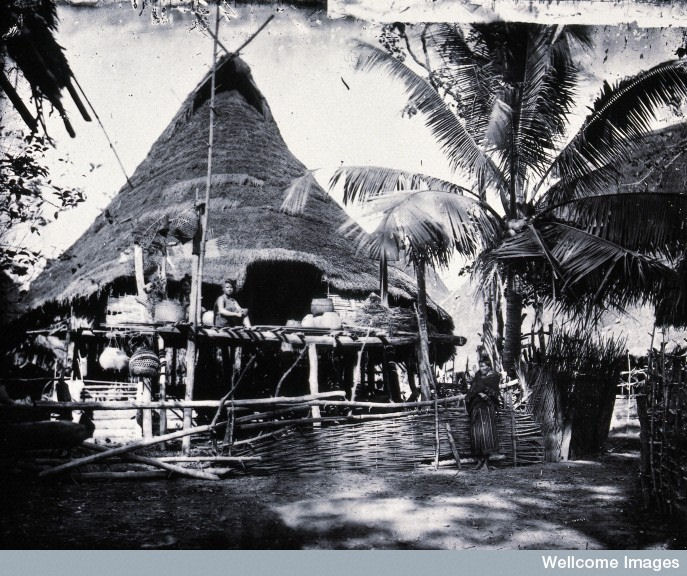
Abb.: Siam 1865: Lao-Dorf bei Petchaburi (เพชรบุรี )
[Bildquelle: John Thomson / Wellcome Images. --
Creative Commons
Lizenz (Namensnennung, keine kommerzielle Nutzung)]
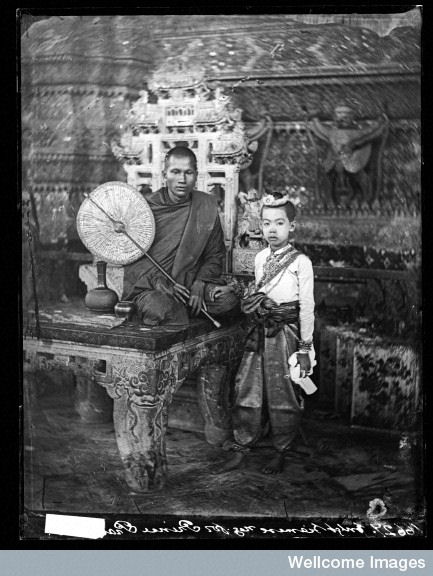
Abb.: Siam 1865: Mönch
[Bildquelle: John Thomson / Wellcome Images. --
Creative Commons
Lizenz (Namensnennung, keine kommerzielle Nutzung)]
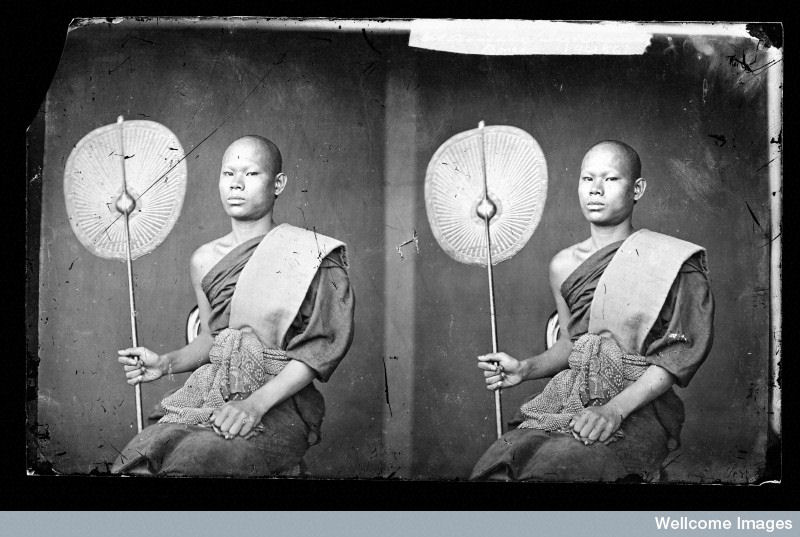
Abb.: Siam 1865: Mönch (Stereoaufnahme)
[Bildquelle: John Thomson / Wellcome Images. --
Creative Commons
Lizenz (Namensnennung, keine kommerzielle Nutzung)]
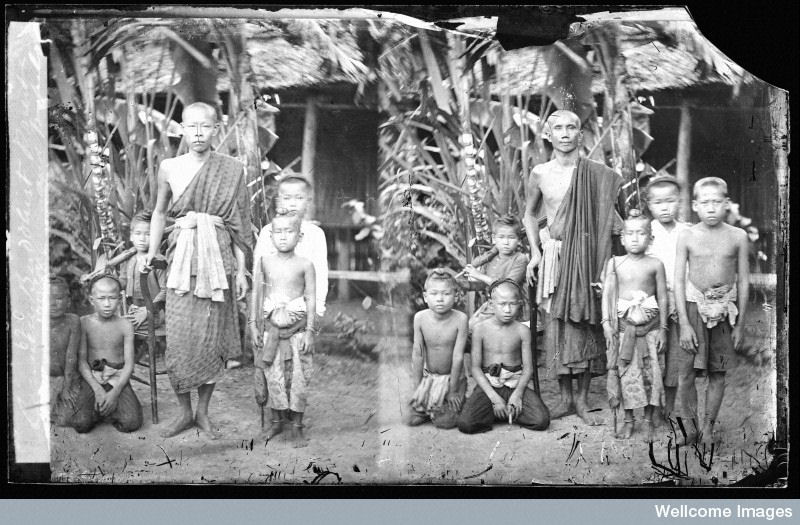
Abb.: Siam 1865: Klosterschule
[Bildquelle: John Thomson / Wellcome Images. --
Creative Commons
Lizenz (Namensnennung, keine kommerzielle Nutzung)]
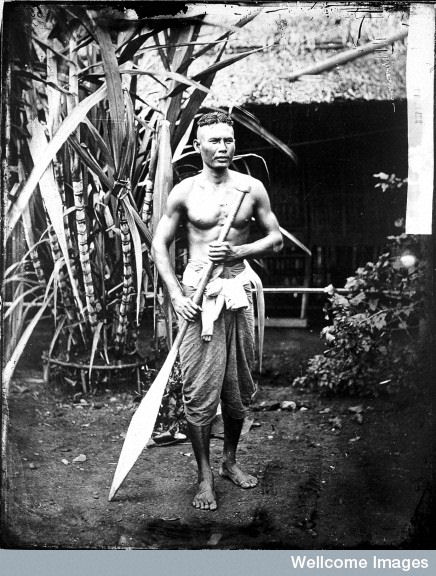
Abb.: Siam 1865: Mann mit Ruder
[Bildquelle: John Thomson / Wellcome Images. --
Creative Commons
Lizenz (Namensnennung, keine kommerzielle Nutzung)]
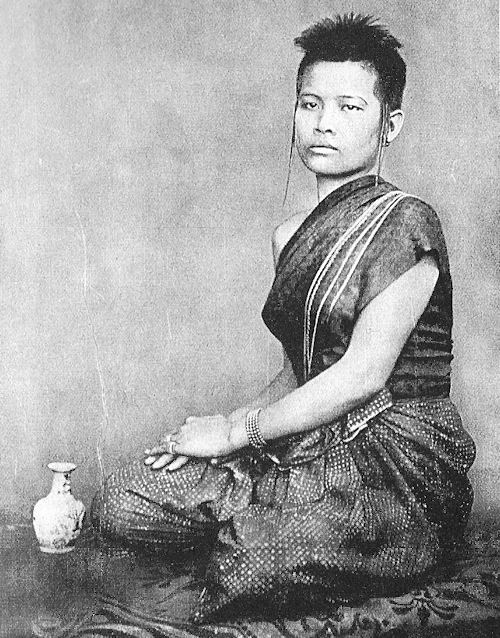
Abb.: Vornehme Siamesin, ca. 1865
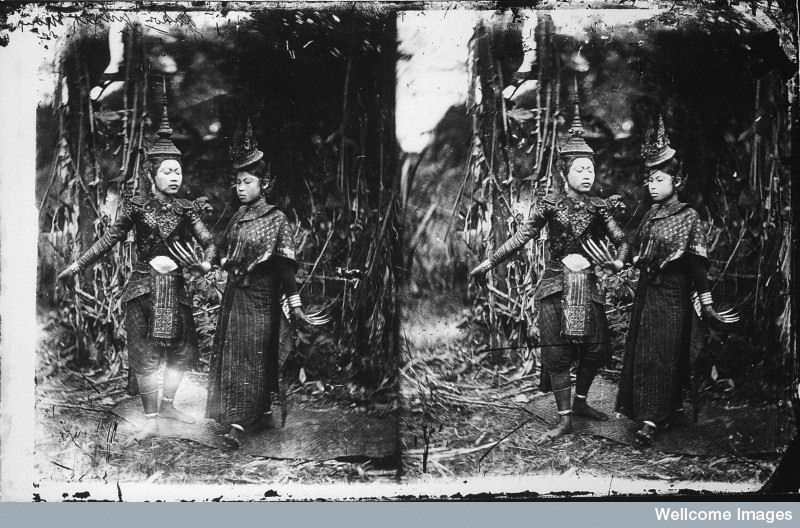
Abb.: Siam 1865: Zwei Tänzerinnen (Stereoaufnahme)
[Bildquelle: John Thomson / Wellcome Images. --
Creative Commons
Lizenz (Namensnennung, keine kommerzielle Nutzung)]
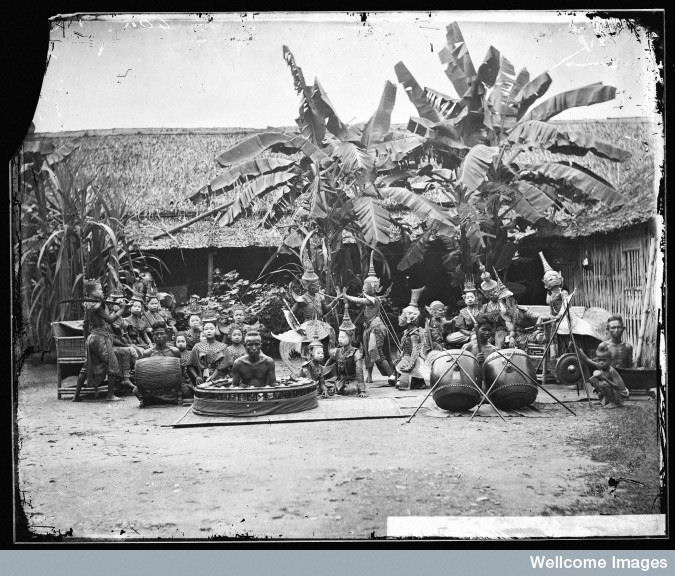
Abb.: Siam 1865: Orchester
[Bildquelle: John Thomson / Wellcome Images. --
Creative Commons
Lizenz (Namensnennung, keine kommerzielle Nutzung)]

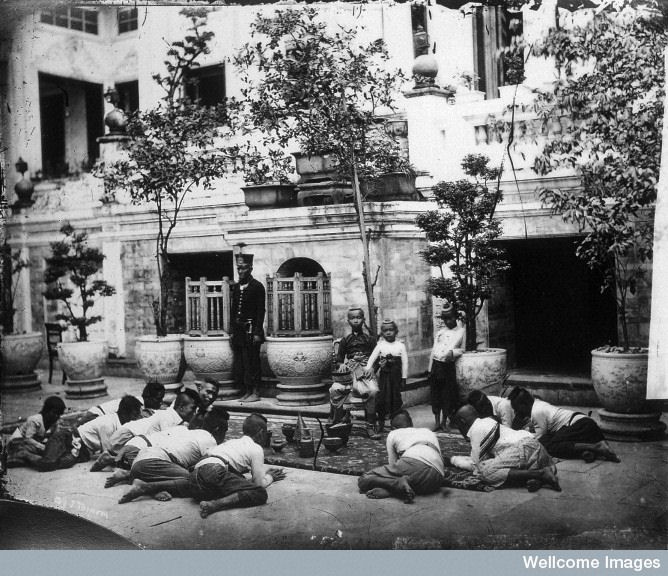
Abb.: Siam 1865: Kronprinz mit Entourage
[Bildquelle: John Thomson / Wellcome Images. --
Creative Commons
Lizenz (Namensnennung, keine kommerzielle Nutzung)]
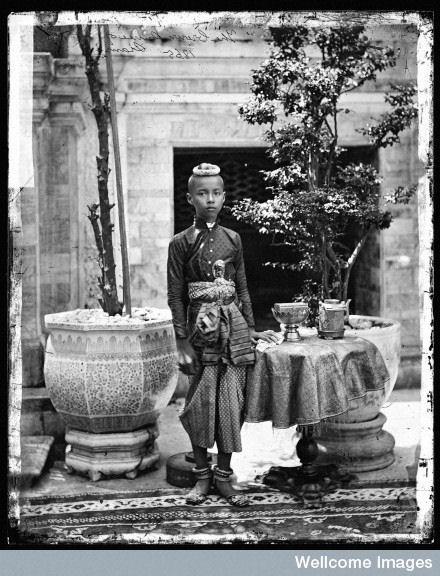
Abb.: Siam 1865: Kronprinz
[Bildquelle: John Thomson / Wellcome Images. --
Creative Commons
Lizenz (Namensnennung, keine kommerzielle Nutzung)]
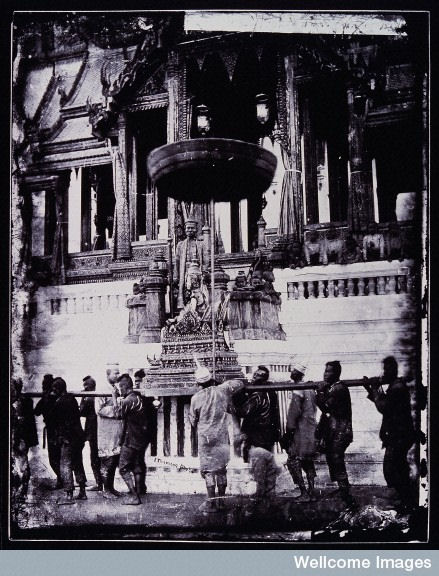
Abb.: Siam 1865: Dem König wird ein Prinz vorgestellt
[Bildquelle: John Thomson / Wellcome Images. --
Creative Commons
Lizenz (Namensnennung, keine kommerzielle Nutzung)]
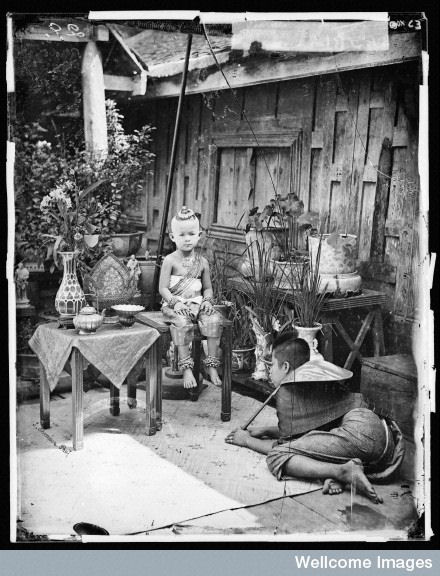
Abb.: Siam 1865: Prinz
[Bildquelle: John Thomson / Wellcome Images. --
Creative Commons
Lizenz (Namensnennung, keine kommerzielle Nutzung)]
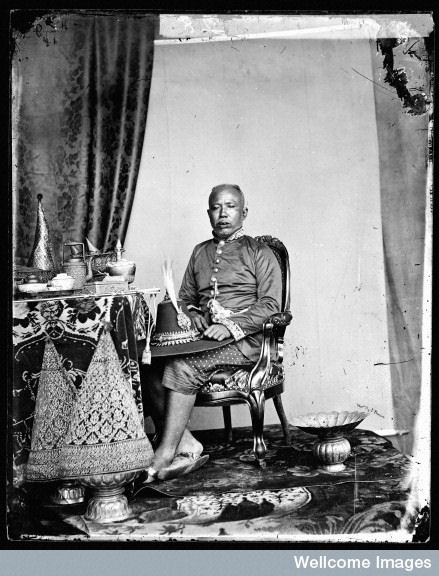
Abb.: Siam 1865: Bruder des Königs
[Bildquelle: John Thomson / Wellcome Images. --
Creative Commons
Lizenz (Namensnennung, keine kommerzielle Nutzung)]
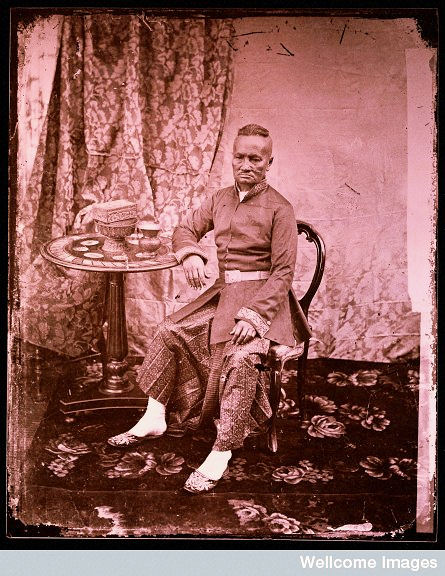
Abb.: Siam 1865: Minister des Kalahom-Departements (สมุหกลาโหม),
1865
[Bildquelle: John Thomson / Wellcome Images. --
Creative Commons
Lizenz (Namensnennung, keine kommerzielle Nutzung)]
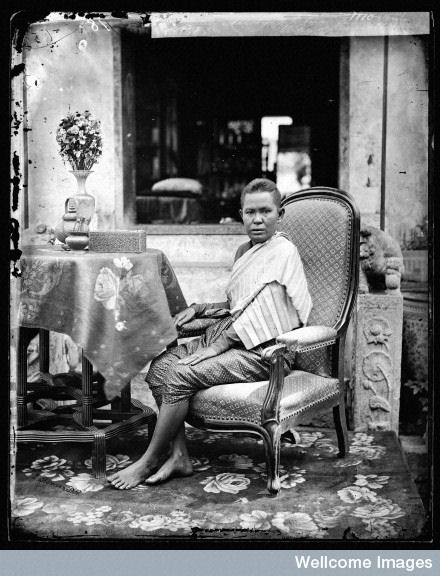
Abb.: Siam 1865: Gattin eines Ministers
[Bildquelle: John Thomson / Wellcome Images. --
Creative Commons
Lizenz (Namensnennung, keine kommerzielle Nutzung)]
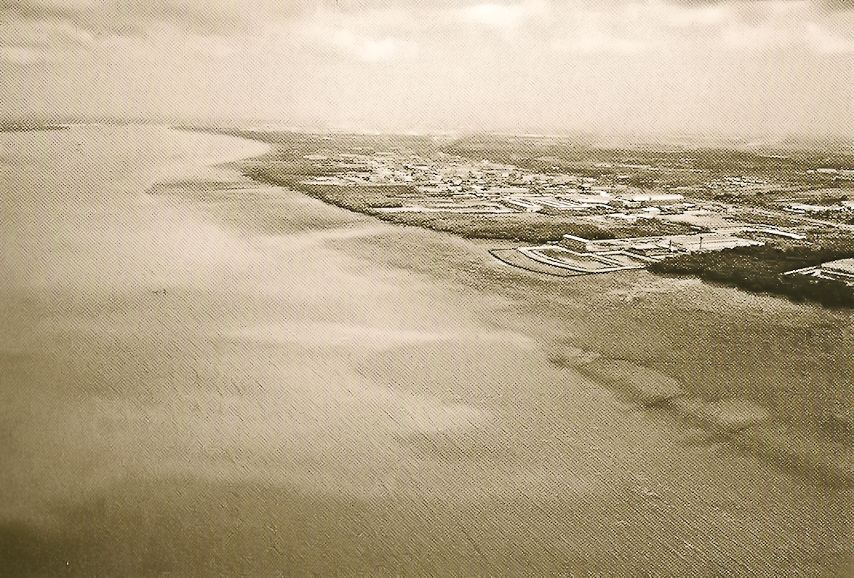
Abb.: Ca. 1865: Mündung des Chao Phraya (แม่น้ำเจ้าพระยา)
bei Samut Prakan (สมุทรปราการ)
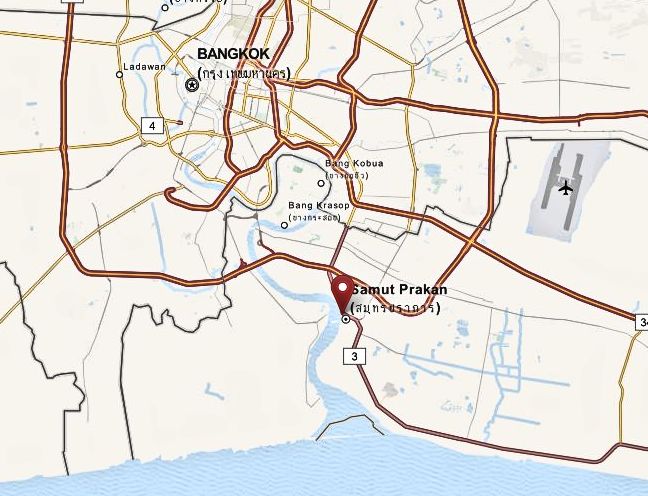
Abb.: Lage von Samut Prakan (สมุทรปราการ)
[Bildquelle: OpenStreetMap. --
Creative
Commons Lizenz (Namensnennung, share alike)]
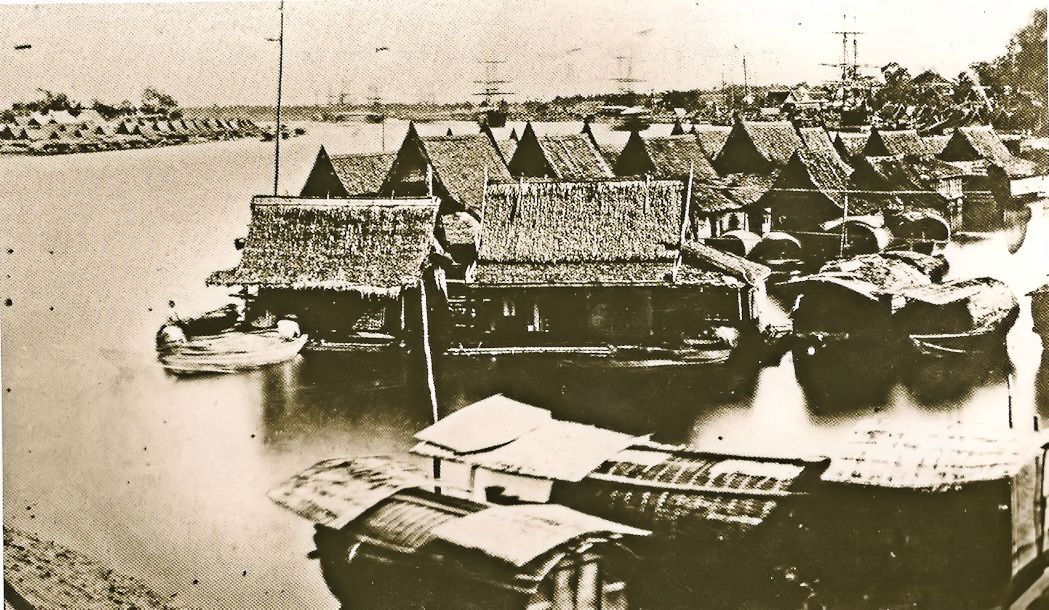
Abb.: ca. 1865: Bangkok, Blick vom Wat Arun (วัดอรุณ)
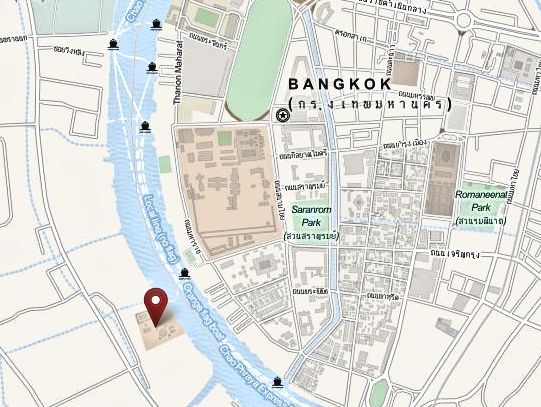
Abb.: Lage des Wat Arun (วัดอรุณ)
[Bildquelle: OpenStreetMap. --
Creative
Commons Lizenz (Namensnennung, share alike)]
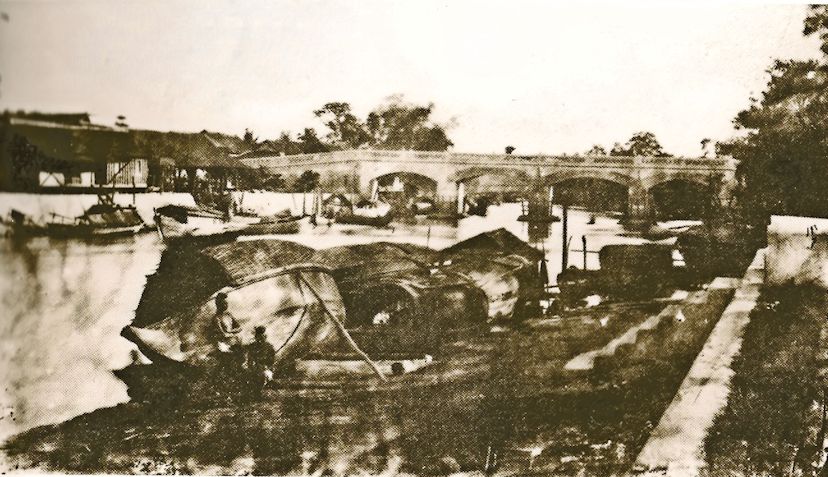
Abb.: Siam 1865: Phra-Chomklao-Brücke (สะพานพระจอมเกล้า), Petchaburi (เพชรบุรี),
1865
[Bildquelle: John Thomson]
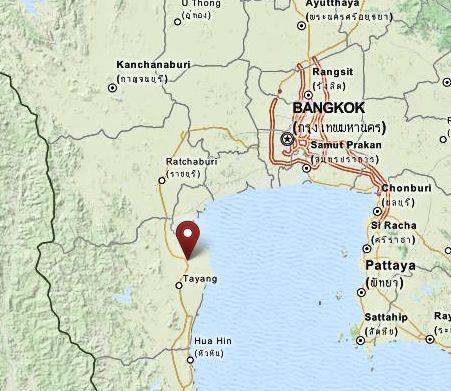
Abb.: Lage von Petchaburi (เพชรบุรี)
[Bildquelle: OpenStreetMap. --
Creative
Commons Lizenz (Namensnennung, share alike)]
1865

Gründung der britischen Bangkok Dock Company für die Wartung von Schiffen, die Bangkok anlaufen sowie für Schiffbau. Nachfolgefirma: The Bangkok Dock Company (1957) Ltd. (บริษัท อู่ กรุงเทพ จำกัด). Es ist die erste Firmengründung in Siam.
Abb.: ®Logo der Nachfolgefirma
"This company, established in 1865, is the oldest in Siam. Its scope includes shipbuilding, general construction, and engineering. During the depression it had a hard time and became heavily indebted. Its splendid dock lay almost idle; owing to the rate of exchange and the high duty on paint, it was impossible for it to compete with Singapore and Hong Kong for even the most ordinary repairs. Its losses in 1931 amounted to Tcs. 503,152, but they were down the following year to Tcs. 27,040. In 1933 this company merged with United Engineers. By 1937 its trading situation again became fairly satisfactory. There was a larger amount of construction, but very competitive conditions meant that there was little profit. The company’s survival was largely due to its holding a number of valuable agencies, such as the Ford agency. That year it was able to declare a 4 per cent dividend, as against 2½ per cent for the previous year; but in 1938 its dividend lapsed to 2½ per cent. The Hong Kong dollar’s depreciation worked adversely for this company, and some ships had to be withdrawn for lack of outward freight. The company feels that matters would improve if the Government would only compel the local registration and licensing of vessels in the coolie passenger trade between Siam and the southern Chinese ports and make them dock in Bangkok for inspection. In September 1938 the company launched the largest vessel it had ever built, and this again brought up the question as to why Siam should buy in Italy and Germany moderate-sized tonnage that she might better build herself at home."
[Quelle: Thompson, Virginia <1903 - 1990>: Thailand the new Siam. -- New York : Macmillan, 1941. -- S. 832.]
1865

In Ningpo (寧波) landen 19 siamesische Handelsschiffe und 18 fahren ab.
Abb.: Lage von Ningpo (寧波)
[Bildquelle: OpenStreetMap. -- Creative Commons Lizenz (Namensnennung, share alike)]
1865

Stapellauf des britischen Dampfschiffs Agamemnon. Zusammen mit seinen Schwesterschiffen Ajax und Achilles gehört es zu den ersten Dampfern, die auf der Ostasienroute mit Segelschiffen konkurrieren können. Sie haben ein Kohlenvorrat für 13.680 km und transportieren 2.800 Tonnen Fracht.
Abb.: Agamamnon
[Bildquelle: Wikimedia. -- Public domain]
1865

Es erscheint:
Maxwell, James Clerk <1831 - 1879>: A Dynamical Theory of the Electromagnetic Field. -- In: Philosophical Transactions of the Royal Society. 155 (1865). -- S. 459–512
Darin legt der schottische Physiker Maxwell die Grundlagen der theoretischen Physik für den Elektromagnetismus. Albert Einstein darüber: Es ist „das Tiefste und Fruchtbarste, das die Physik seit Newton entdeckt hat“.
Abb.: J. C. Maxwell mit Gattin und Hund, 1869
[Bildquelle: Wikimedia -- Public domain]
1865

Edinburgh (GB): erstmals wird Beton als Deckschicht für eine Straße verwendet.
1865

Der Brite Thomas J. Barratt (1841–1914) tritt in die Seifenfabrik A&F Pears ein und wird zum "Vater der modernen Werbung".
Abb.: "The white man's burden" : Reklame für Pears Soap
[Public domain]
Abb.: Reklame Thailand 2013 des Yanhee Hospital in Bangkok: สาวอีสานสวย ... ด้อยยันฮี" - “Isan [อีสาน] Mädchen können durch Yanhee hübsch sein …lass Deine Nase für nur 5000 machen.”
[Fair use]
Abb.: Reklame für einen Haut-Weißmacher, Thailand 2013
[Fair use]
1865-01

N. A. Macdonald von der American Presbyterian Mission gibt den Bangkok Recorder, eine kleine Zeitung heraus. Rechtliche Auseinandersetzung mit einer von sich von der Zeitung angegriffen fühlenden Person führen zum finanziellen Ruin der Zeitung. Etwas später erscheint ein Bangkok Recorder (หนังสือจดหมายเหตุ) auf Siamesisch, geht aber bald ein.
Abb.: Bangkok Recorder : a semimonthly journal. -- Vol. I. -- No. 3. -- 1865-02-15
Abb.: Bangkok Recorder : a semimonthly journal. -- Vol. I. -- No. 3. -- 1865-02-15
Abb.: หนังสือจดหมายเหตุ = The Bangkok Recorder. -- 1865-03-01

Der Bangkok Recorder schreibt einmal (wann?) über Rama IV.:
"When Phra Chom Klau [Rama IV.] was crowned, he promised to protect Buddhism. The more is the pity - Buddhism is the great millstone, that is dragging down the whole nation. It is a spell upon them, which forbids their rising up as a strong and great people. They must be puny as a necessity, while they cling to a false religion and bow down to false gods. The very religion dwarfs them. How can they while they worship a mere mortal like themselves, have a grasping, expanding, comprehending influence, that includes all time and all races....a king in a heathen country which cherishes polygamy...." [Zitiert in: Manich Jumsai [มานิจ ชุมสาย] <1908 - 2009>: Popular history of Thailand. -- Bangkok : Chalermnit, 1972. -- S. 487]
1865-01

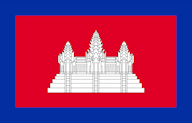
Prinz Sisowath (ព្រះបាទស៊ីសុវតិ្ថ, 1840 - 1927) von Kambodscha verhandelt mit Admiral Pierre-Paul de La Grandière (1807 - 1876), dem Gouverneur von Cochinchina, über eine Rückkehr nach Kambodscha. Der Admiral geht nicht auf Sisowaths Ansinnen ein, erlaubt diesem aber nach Saigon zu kommen. Als König Norodom I. (ព្រះបាទនរោត្តម) von Kambodscha (1834 - 1904) erfährt, dass Sisowath in Saigon ist, gerät er in Panik. Die Franzosen halten teilweise Sisowath für intelligenter und geeigneter als Norodom, auf alle Fälle aber für beim Volk beliebter.
Abb.: Prinz Sisowath (ព្រះបាទស៊ីសុវតិ្ថ)
[Bildquelle: http://v4.mymajorcompany.com/ajax/mf/project/home/94380. -- Zugriff am 2014-12-18. -- Fair use]
1865-01 - 1879

Thomas George Knox (1824 - 1887) ist britischer Generalkonsul in Siam.
Abb.: Thomas George Knox
"Sir Thomas George Knox (* Januar 1824; † 29. Juli 1887) war ein britischer Offizier und Diplomat in Siam. Knox war ein Sohn des Reverend James Spencer Knox und Clara Barbara Beresford. Nach einer Offiziersausbildung diente er im 65. und im 98. Regiment in Indien und in China. Später wurde er Mitarbeiter der Britischen Ostindienkompanie. Er bildete die Truppen des Uparat (มหาอุปราช) von Siam aus[1]. Zwischen 1864 und 1879 war er britischer Generalkonsul in Siam.
1854 heiratete Knox die Siamesin Prang Yen. Das Paar hatte drei Kinder:
- Fanny Knox (1856 - 1925), die einen siamesischen Adligen heiratete, der auf Betreiben des Regenten Chaophraya Si Suriyawong hingerichtet wurde,
- Caroline Knox (1857 - 1893), die den Sohn von Anna Leonowens, Louis (Louis Thomas Gunnis Leonowens, 1856 - 1919) heiratete,
- Thomas Knox (1859 - 1923)
Knox war lange Jahre Mitglied der Royal Asiatic Society."
[Quelle: https://de.wikipedia.org/wiki/Thomas_George_Knox . -- Zugriff am 2016-04-13]
1865-01-11

Alfred Holt lässt die Ocean Steam Ship Company registrieren. Sie wird eine führende Rolle im Verkehr zwischen Großbritannien und dem Fernen Osten (China) spielen.
Siehe:
Hyde, Francis Edwin <1908 - 1978> ; Harris, J. R.: Blue Funnel; a history of Alfred Holt and Company of Liverpool from 1865 to 1914 / by Francis E. Hyde with the assistance of J.R. Harris. -- Liverpool : Liverpool University Press, 1956. -- 201 S. : Ill. ; 25 cm
Am 1865-04-19 fährt als erstes das Dampfschiff Agamemnon die Strecke Liverpool - Mauritius - Penang - Singapore - Hong Kong - Shanghai.
Abb.: Agamemnon
1865-01-14

Justin Napoléon Samuel Prosper, 4e marquis de Chasseloup-Laubat (1805 - 1873), französischer Marine- und Kolonialminister (ministre de la marine et des colonies), beschließt, eine Expedition auszusenden, die die Schiffbarkeit des Mekong (ແມ່ນ້ຳຂອງ / แม่น้ำโขง) nördlich von Kambodscha erkunden soll.
Abb.: 1865 weitgehend unbekannter Verlauf des Mekong (ແມ່ນ້ຳຂອງ / แม่น้ำโขง)
[Bildquelel: Michiel1972 / Wikimedia. -- GNU FDLicense]
1865-01-25
Verbot, Reis aus Siam zu exportieren. So soll die Reisversorgung in Siam sichergestellt werden.
1865-02-08 + 1865-03-98

Brünn (Mähren): der Augustinermönch Gregor Mendel (1822 - 1884) trägt unter dem Titel "Versuche über Pflanzen-Hybriden" vor dem Naturforschenden Verein in Brünn die Ergebnisse seiner Pflanzenkreuzungen vor: die Mendelschen Gesetze der Vererbung. Obwohl seine Arbeit zunächst nicht beachtet wurde, ist dies die Grundlegung der modernen Genetik.
Die Abhandlung wird veröffentlicht im Teil "Abhandlungen" von
Verhandlungen des Naturforschenden Vereines in Brünn. -- IV. Bd. (1865). -- Brünn, 1866. -- S. 3 - 47.
Abb.: Erste Seite der veröffentlichten Abhandlung
1865-03-15
US-Baptistenmissionar Dan Beach Bradley (1804 - 1873) über kostenloses Baumfällen in der Nähe von Phetchaburi (เพชรบุรี):
Abb.: Lage von Phetchaburi (เพชรบุรี), Ratchaburi (ราชบุรี), Bangkok
[Bildquelle: OpenStreetMap. -- Creative Commons Lizenz (Namensnennung, share alike)]
"Not far from Phetburi there were, for example, many woodcutters who "cut timber free of duty as the forests have no owner but the king and He does not know where they are, they sell their wood to the Laos and others who come with carts for it and pay them for it in rice and other merchandise at the rate of about 1 tical a picul [Schulterlast]. The cartsmen take it, a journey of two days, to Ratboree [R
atchaburi - ราชบุรี] about 3 piculs to a load, and sell it for 2 ticals per picul and these [the buyers] carry it to Bangkok in boats and sell it for 2½ to 3 ticals per picul.""[Zitiert in: Terwiel, Barend Jan <1941 - >: A history of modern Thailand 1767 - 1942. -- St. Lucia [u. a.] : Univ. of Queensland Press, 1983. -- S. 201.]
1865-04-02

Der US-Wissenschaftler Thaddeus Sobieski Constantine Lowe (1832 - 1913) erhält eines seiner Patente auf eine Maschine zur Herstellung von Eis ("Compression Ice Machine"). Mit dieser Maschine werden die ersten Kühlschiffe ausgerüstet.
Abb.: Aus der Patentschrift
1865-04-09

Ankunft des französischen Gesandten Gabriel Aubaret (1825 - 1894) auf dem Kriegsschiff Mitraille. Der Kapitän weigert sich, wie vorgeschrieben, das Schiff in Paknam (ปากน้ำ) zu entwaffnen, sondern richtet in Bangkok seine Kanonen auf den Königspalast. Auburet "verhandelt" so einen Vertrag mit Frankreich über die Anerkennung des französischen Protektorats über Kambodscha und die Anerkennung der Zugehörigkeit von Battambang (ក្រុងបាត់ដំបង) und Siem Reap (សៀមរាប) zu Siam.
1865-04-14


Auf Anraten des (inzwischen verstorbenen) britischen Generalkonsuls Robert Hermann Schomburgk (1804 – 1865) unterzeichnet Siam den Entwurf von Gabriel Aubaret (1825 - 1894) eines Vertrags mit Frankreich. Der Vertragsentwurf enthält die Anerkennung des französischen Protektorats über Kambodscha und die Anerkennung der Zugehörigkeit von Battambang (ក្រុងបាត់ដំបង) und Siem Reap (សៀមរាប) zu Siam.
1865-04-15 - 1869-03-04

Andrew Johnson (1808 - 1875) ist Präsident der USA.
Abb.: Wahlplakat 1864
[Bildquelle: Wikipedia. -- Public domain]
1865-04-23 - 1867-11

Kambodscha: Pou Kombo Revolte
"A far more serious insurrection led by Pou Kombo started in 1865 in the northeast and by 1867 had spread to the eastern provinces. Pou Kombo, an ex-monk and possibly an ethnic Kui [กูย], also claimed he was from royal lineage. On 23 April 1865, Pou Kombo presented himself before the commander of the French post of Tayninh [Tây Ninh] as a legitimate heir and claimant of the Cambodian throne. The commander, probably alarmed by the popular support that Pou Kombo had already mustered in the eastern provinces, had him arrested and imprisoned in Saigon. In June 1866 Pou Kombo escaped and organised the uprising of Khmer and Cham [ជនជាតិចាម] peasants, as well as Kui and Stieng [Xtiêng / ខ្មែរលើ] highlanders, against the king and the French. The uprising was fuelled not only by the unpopularity of Norodom [ព្រះបាទនរោត្តម, 1834 - 1904] and the attraction of millenarian beliefs but also by the imposition of oppressive taxation policies that Pou Kombo pledged to rescind (Hansen, 2008). On 24 June 1866, 1,000 Vietnamese joined his cause, increasing the total number of partisans to at least 2,000. Pou Kombo’s forces killed the governors of Kratie [ក្រចេះ] and Sambor [សំបូរ], 17 French soldiers, a French priest; ransacked unsupportive villages; and targeted Catholic communities. In October 1866, leading 6,000 men, Pou Kombo defeated the royal forces near Ba Phnom [ស្រុកបាភ្] (Batz, 1931) and killed the Cambodian navy minister. These military successes increased his prestige, and by November 1866, he and 10,000 followers marched on Phnom Penh [ភ្នំពេញ] and Oudong [ឧដុង្]. Pou Kombo had become a serious threat to King Norodom’s power, but a French battalion attacked his headquarters and inflicted serious losses on the insurgents (Guérin, 2008). Pou Kombo narrowly escaped capture, and the insurgents were forced to retreat to the northeastern regions of Kratie and Sambor, although in January 1867 their group pillaged the province of Ba Phnom in the southeast of Cambodia (Guérin, 2008). Pou Kombo was captured in Kampong Thom [ក្រុងកំពង់ថំ] in November 1867 and beheaded. According to Hansen (2008) ‘his severed head was sent to Phnom Penh for display in order to persuade the populace that this supposedly invulnerable leader had been apprehended and decapitated through French military power’ (p. 55), but Osborne (1969) suggested that Pou Kombo was put to death by Khmers, not by the French.
Pou Kombo’s death coincided with a reduction in the lethality and scope of the insurrection, but it did not stop it. In June 1868, one of Pou Kombo’s lieutenants and around 600 mostly Stieng men raided villages around Kratie. In 1870, after they stopped paying taxes, angry villagers killed the governor of Sambor. Several raids followed through the Mekong Valley and against convoys of supplies to the French troops based in Cochinchina. Tully (2002) interpreted these raids as the degeneration of rebellion into banditry, but Guerin (2008) suggested that they were motivated by the need to replenish the rebels’ rice supplies. The repression was severe, and the French launched punitive expeditions, occupying and burning down Stieng villages."
[Quelle: Broadhurst, Roderic G. ; Bouhours, Thierry ; Bouhours, Brigitte: Violence and the civilising process in Cambodia. -- Cambridge, UK : Cambridge University Press, 2015. -- 362 S. : Ill. ; 24 cm. -- ISBN 9781107109117. -- S. 38ff. -- Fair use]
1865-05-17
Paris (Frankreich): International Telegraph Convention, von 20 Staaten unterzeichnet. Siam tritt am 1883-05-02 bei (in der Neufassung von 1875-06/07).
Abb.: International Telegraph Convention 1865
[Bildquelle: http://www.itu.int/en/history/Pages/ITUsHistory.aspx. -- Zugriff am 2015-03-07]
1865-07-03


Rama IV. kondoliert dem US-Vizekonsul George Virgin zur Ermordung von US-Präsident Abraham Lincoln (1865-04-15):
" ... assassination of Lincoln as a "very improper occurrence of calamity which will be heard with great surprise around the globe" [Zitiert in: Morgan, Susan <1943 - >: Bombay Anna : the real story and remarkable adventures of the King and I governess. -- Berkeley [u.a.] : Univ. of California Press, 2008. -- 274 S. : Ill. ; 23 cm. -- ISBN 978-0-520-26163-1. -- S. 100]
1865-07-07


Der französische Repräsentant in Kambodscha, Leutnant Ernest Doudart de Lagrée (1823 - 1868), an Pierre-Gustave Roze (1812 - 1883), Gouverneur von Cochinchina
"Compong-Luong, 7 juillet 1865, ... « Certains bruits répandus à Saïgon tendraient à faire craindre une révolution imminente au Cambodge... Sans être dénués de tout fondement, ces bruits sont empreints d’une grande exagération..., mais répondent à un état d’anxiété que je cherche à dissiper et qui a ses soubresauts. La venue du Prince Préa keo féa devait nécessairement donner lieu à des inquiétudes de ce genre ...
... La décadence de ce petit royaume est aujourd’hui achevée, irrémédiable. Je crois qu’il ne lui reste aucun ressort, aucune chance de réorganisation par ses propres forces. Abandonné à lui-même, il tomberait immédiatement dans une complète anarchie. Le Roi est impopulaire, autant à cause de son passé que par l’exagération actuelle de ses dépenses personnelles. Il ne fait d’ailleurs rien de sérieux dans l’intérêt de son peuple; peut-être la « bonne volonté ne lui manque-t-elle pas complètement, mais il rencontre partout l’inertie. Son frère, ou tout autre, ne ferait pas davantage et dépenserait sans doute tout autant.
Il n’existe pas de classe moyenne au Cambodge. Il n’y a que des mandarins ne travaillant pas et une population misérable et exploitée à outrance. Tout le commerce est aux étrangers, Chinois, Malais, Annamites. N’ayant plus aucune garantie dans les lois du pays et complètement appauvri par les exactions, le peuple est incapable d’offrir la moindre résistance aux révoltes armées.
La classe des mandarins, deux ou trois fois plus nombreuse qu’il ne faudrait, ne peut être satisfaite qu’en partie par le Roi. Il a beau diviser de plus en plus l’autorité, augmenter ses fonctionnaires dans les provinces, le nombre des mécontents est toujours considérable. Il en résulte un véritable parti en disponibilité, prêt à se jeter entre les mains du premier prétendant venu, à la condition que celui-ci promette, en cas de réussite, de faire table rase et de donner à ses amis l’exploitation complète du Cambodge.
Les plus nombreux, et de beaucoup, comptent sur le Prince Préa keo féa. D’autres sont ralliés à Assoua (le faux prétendant Ang Phim), qui a un parti organisé dans le Sud-Ouest. Le second frère du Roi, Si Wâtha [Siwotha] qui est à Bangkok, et d’autres, s’ils se présentaient, ne manqueraient pas de clients. Dans un pareil état de choses le pays est sans force et incapable de se soutenir un jour sans un appui étranger.
A notre arrivée, les Siamois avaient définitivement pris possession du Cambodge. On peut dire qu’ils le gouvernaient directement. Depuis, notre influence a été substituée à la leur. Le pays ne vit et ne se soutient que par nous..."
[Quelle: Taboulet, Georges <1888 - 1979>: La geste Française en Indochine : histoire par les textes de la France en Indochine des origines à 1914. -- Paris : Adrien-Maisonneuve, 1955 - 1956. -- 2 Bde. : 935 S. : Ill. ; 25 cm. -- Bd. 2. -- S. 646f.]
1865-09-14 - 1868-01-21

James Madison Hood (1815 - 1871) ist bezahlter Konsul der USA in Siam.
1865-09-26 - 1866-01-27

John Thomson (1837 - 1921), britischer Fotograf in Singapur, hält sich in Bangkok und Umgebung auf und fotografiert.
Abb.: John Thomson: A Laos village in Siam, in the vicinity of Petchiburee [เพชรบุรี], 1865/1866
[Bildquelle: Wellcome Library, London. -- Creative Commons Lizenz (Namensnennung)]
Abb.: John Thomson: Buddhist priests eating, Bangkok, Siam, 1865/1866
[Bildquelle: Wellcome Library, London. -- Creative Commons Lizenz (Namensnennung)]
Abb.: John Thomson: Two Siamese dancing girls, Siam, 1865/1866
[Bildquelle: Wellcome Library, London. -- Creative Commons Lizenz (Namensnennung)]
Abb.: John Thomson: A Siamese bonze (Buddhist Priest) with a royal pupil, Siam, 1865/1866
[Bildquelle: Wellcome Library, London. -- Creative Commons Lizenz (Namensnennung)]
1865-10-29 - 1866-06-26

John Russel, 1st Earl Russel (1792 - 1878) ist Prime Minister Großbritanniens.
1865-11-03
Chao Phraya Thipakorawong (เจ้าพระยา ทิพากรวงศ์, Kham Bunnag - ขำ บุนนาค, 1813 - 1870) schreibt im Bangkok Rekorder über Geisterschreine:
"“People who pay respect to icons in spirit shrines are wrong ... [because the spirit] ... is formless and invisible. No one knows whether spirits exist or not. Blindly paying respect to invisible things is useless.” However, he argued that everyone should pay respect to Buddha statues. “The religion with which the Thai affiliate nowadays is a religion whose adherents must pay respect to [Buddha] statues. The Thai take statues as reminders of Buddha’s virtues.”" [Zitiert in: Pattana Kitiarsa [พัฒนา กิติอาษา] <1968-2013>: Mediums, monks, and amulets : Thai popular Buddhism today. -- Chiang Mai : Silkworm, [2012]. -- 170 S. : Ill ; 21 cm. -- ISBN 9786162150494. -- S. 134.]
1865-12

König Norodom I (ព្រះបាទនរោត្តម, 1834 - 1904) verlegt die Hauptstadt von Kambodscha von Udong (ឧដុង្គ) nach Phnom Penh (ភ្នំពេញ)
Abb.: Lage von Udong (ឧដុង្គ) und Phnom Penh (ភ្នំពេញ)
[Bildquelle: OpenStreetMap. -- Creative Commons Lizenz (Namensnennung, share alike)]
Abb.: Lage von Udong (ឧដុង្គ) und Phnom Penh (ភ្នំពេញ)
[Bildquelle: Scottish Geographical Magazine. -- 1886]
1865-12-18

In den USA tritt das 13. Amendment zur Verfassung in Kraft: damit wird (erst jetzt!) die Sklaverei abgeschafft. Die Staaten der USA brauchen bis 1995 (!, Missisippi) bis alle das Amendement ratifiziert haben.
Abb.: Inserat zum Sklavenverkauf, Kentucky (USA), 1855 (!)
1865-12-23 - 1926-12-31
Union monétaire latine (Lateinische Münzunion) zwischen Frankreich, Belgien, Italien, Schweiz und Griechenland. Später schließen sich weitere Länder informell an: das Wertverhältnis zwischen Gold- und Silbermünzen wird einheitlich festgelegt (Bimetalismus). Jeder Mitgliedsstaat prägt eigene Münzen mit eigenen Währungsbezeichnungen. Die Währungseinheiten, die im Verhältnis von 1:1 zueinander stehen, sind der Franc zu 100 Centimes in Frankreich und Belgien, der Franken zu 100 Rappen in der Schweiz, die Lira zu 100 Centesimi in Italien und die Drachme zu 100 Lepta in Griechenland.
Abb.: 5 französische Franc 1868
[Bildquelle: Pietro / Wikimedia. -- GNU FDLicense]
ausführlich: http://www.payer.de/thailandchronik/ressourcen.htm
Moffat, Abbot Low <1901 - 1996>: Mongkut, the king of Siam. -- Ithaca N.Y. : Cornell UP, 1961. --254 S. : Ill. ; 23 cm.
Blofeld, John <1913 - 1987>: King Maha Mongkut of Siam. -- 2. ed. -- Bangkok : Siam Society, 1987. -- 97 S. : Ill. ; 22 cm.
Chula Chakrabongse [จุลจักรพงษ์] <1908 - 1963>: Lords of life : History of the Kings of Thailand. -- 2., rev. ed. -- London : Redman, 1967. -- 352 S. : Ill. ; 22 cm.
Phongpaichit, Pasuk <ผาสุก พงษ์ไพจิตร, 1946 - > ; Baker, Chris <1948 - >: Thailand : economy and politics. -- Selangor : Oxford Univ. Pr., 1995. -- 449 S. ; 23 cm. -- ISBN 983-56-0024-4. -- Beste Geschichte des modernen Thailand.
Terwiel, Barend Jan <1941 - >: A history of modern Thailand 1767 - 1942. -- St. Lucia [u. a.] : Univ. of Queensland Press, 1983. -- 379 S. ; 22 cm.
Ingram, James C.: Economic change in Thailand 1850 - 1870. -- Stanford : Stanford Univ. Pr., 1971. -- 352 S. ; 23 cm. -- "A new edition of Economic change in Thailand since 1850 with two new chapters on developments since 1950". -- Grundlegend.
Akira, Suehiro [末廣昭] <1951 - >: Capital accumulation in Thailand 1855 - 1985. -- Tokyo : Centre for East Asian Cultural Studies, ©1989. -- 427 S. ; 23 cm. -- ISBN 4896561058. -- Grundlegend.
Skinner, William <1925 - 2008>: Chinese society in Thailand : an analytical history. -- Ithaca, NY : Cornell Univ. Press, 1957. -- 459 S. ; 24 cm. -- Grundlegend.
Simona Somsri Bunarunraksa [ซีมอนา สมศรี บุญอรุณรักษา]: Monseigneur Jean-Baptiste Pallegoix : ami du roi du Siam, imprimeur et écrivain (1805 - 1862). -- Paris : L'Harmattan, 2013. -- 316 S. : Ill. ; 24 cm. -- (Chemins de la mémoire ; Novelle série). -- ISBN 978-2-336-29049
Morgan, Susan <1943 - >: Bombay Anna : the real story and remarkable adventures of the King and I governess. -- Berkeley [u.a.] : Univ. of California Press, 2008. -- 274 S. : Ill. ; 23 cm. -- ISBN 978-0-520-26163-1
ศกดา ศิริพันธุ์ = Sakda Siripant: พระบาทสมเด็จพระจุลจอมเกล้าเจ้าอยู่หัว พระบิดาแห่งการถ่ายภาพไทย = H.M. King Chulalongkorn : the father of Thai photography. -- กรุงเทพๆ : ด่านสุทธา, 2555 = 2012. -- 354 S. : Ill. ; 30 cm. -- ISBN 978-616-305-569-9
Lavery, Brian: Schiffe : 5000 Jahre Seefahrt. -- London [u. a.] : DK, 2005. -- S. 184. -- Originaltitel: Ship : 5000 years of marine adventure (2004)